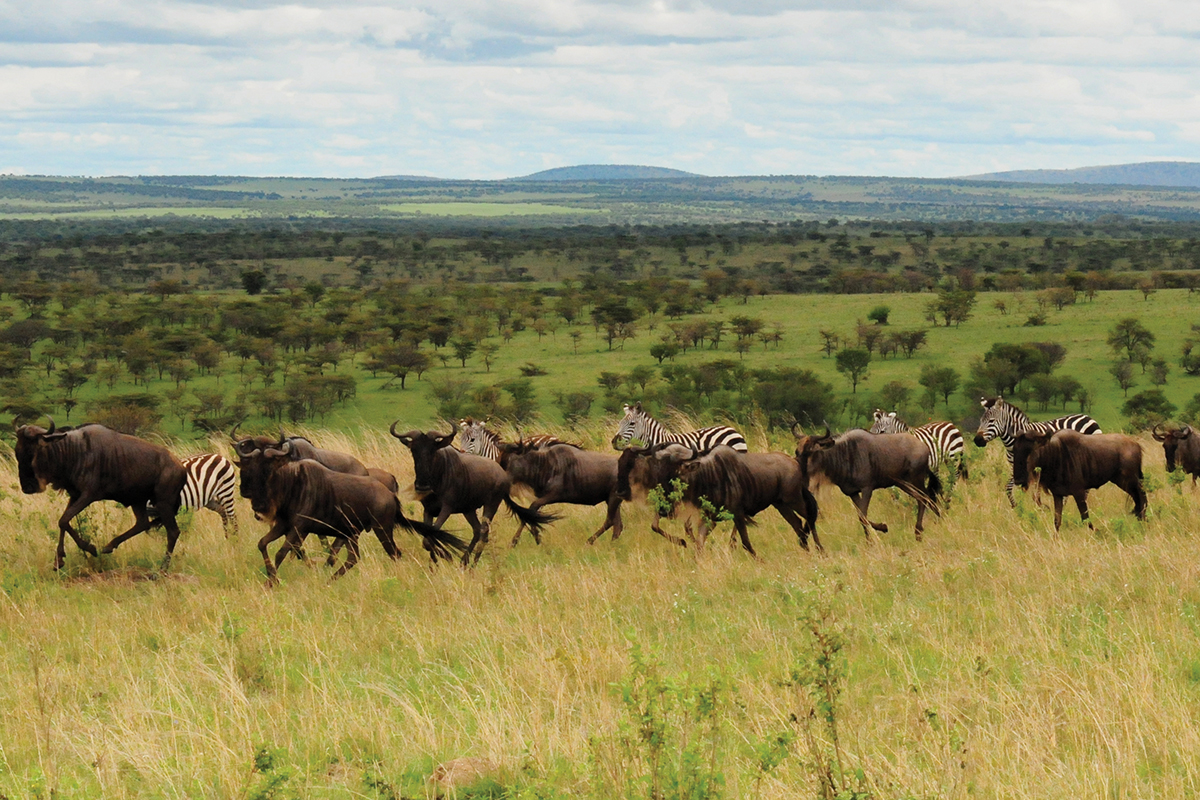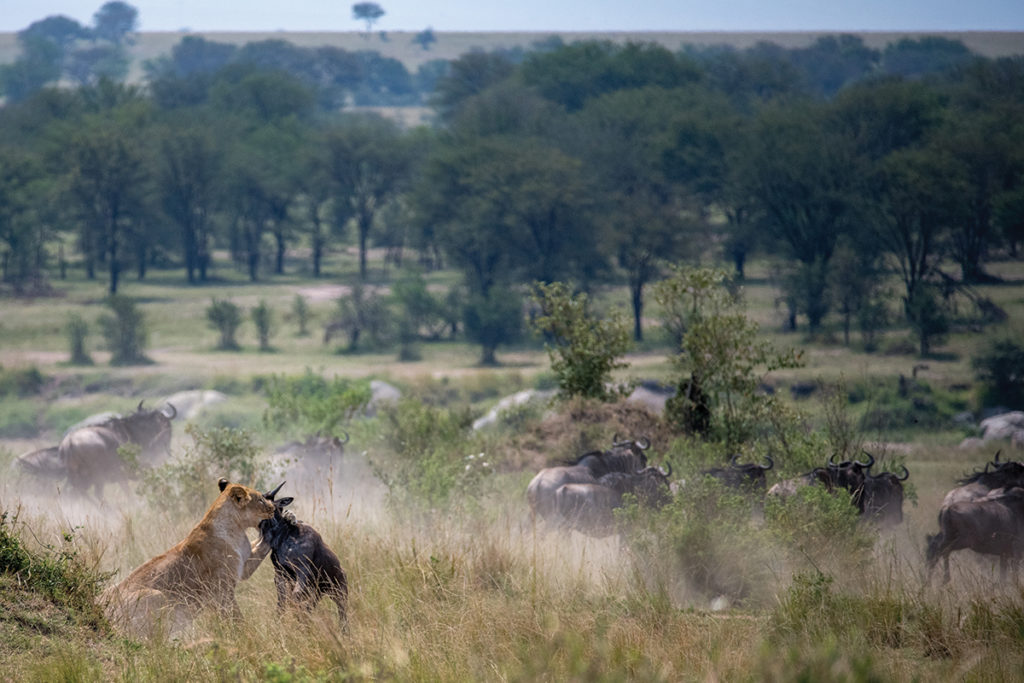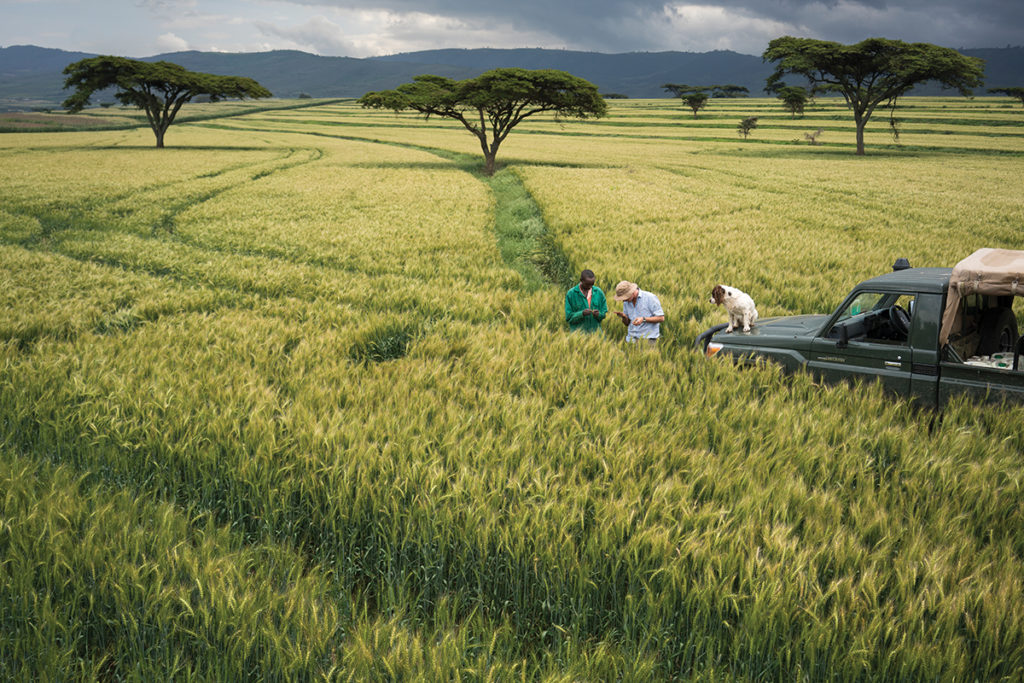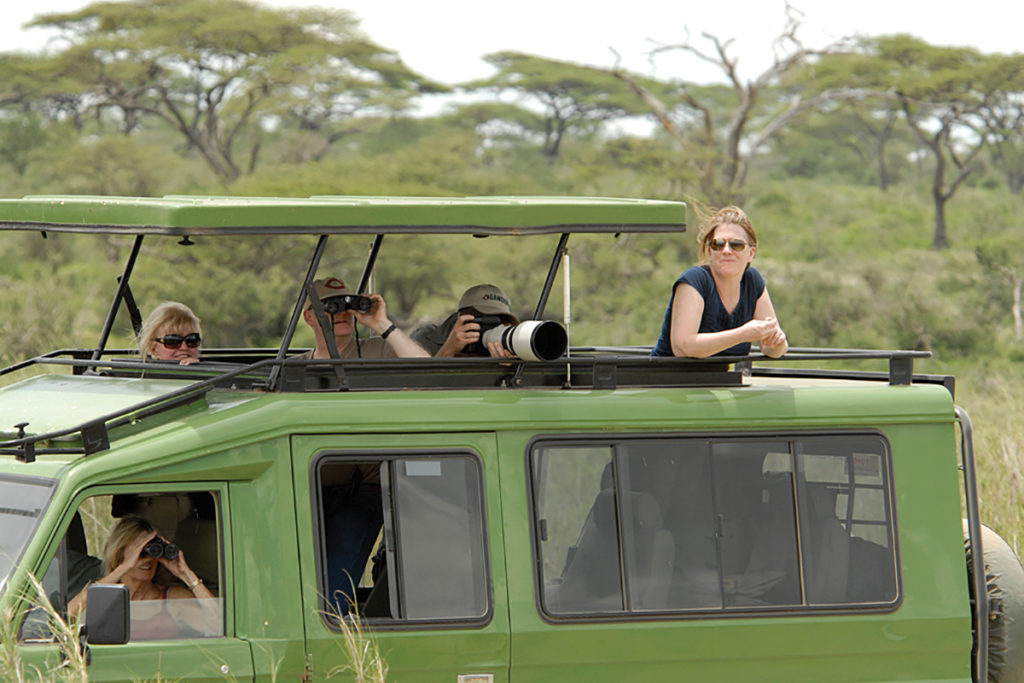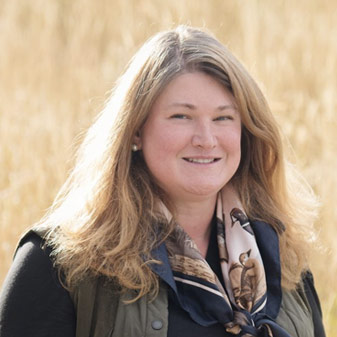Mention African wildlife, and many people think of what is known as the Great Migration. The near stampede of wildebeest, zebras, and other big-game species has dominated television nature programs for decades. The millenia-old drama of horns and hooves following the rains across the plains of Kenya and Tanzania has become so ingrained in the public conception of wildlife that the ritual may seem inviolate.
However, new research shows that the Great Migration is slowly collapsing due to widespread habitat loss. At risk is not only East Africa’s natural heritage but also a wildlife-tourism economy worth hundreds of millions of dollars in direct expenditures. With each passing day the challenge grows, and options for overcoming it shrink like a water hole in the dry season.
One possible solution lies in Kenya’s burgeoning conservancy movement, an effort centered on using wildlife to promote sustainable economic development on private and communal lands. Conservancies aim to maintain habitat and restore wildlife populations by giving rural residents more reason to be invested in conservation outcomes, while still allowing compatible land uses, primarily tourism. For Kenya’s conservancies to reach their full potential, however, they must begin to look beyond tourism as a source of revenue, especially in areas within the Great Migration pathway. If they do so, a country that has staked its global reputation on its conservation programs may yet pull some of its most iconic wildlife back from the brink.
Stampeding Toward Trouble
The Great Migration encompasses a circular, seasonal movement of wildebeest, zebras, and Thomson’s gazelles in the Serengeti-Mara Ecosystem, a nearly 10-million-acre expanse of grasslands that straddles the border between Kenya and Tanzania. Winter and spring find the herds in the lush grasses of the Serengeti. As summer rains begin to fall, the animals move north, fording the Mara River into Kenya before following the seasons south again in a 1,800-mile whirl. It is the largest, most diverse migration of large mammals in the world.
A study by an international team of researchers recently published in Science raised alarms that the number of wildebeest in the Great Migration has fallen by half since 1977. While the Serengeti-Mara Ecosystem boasts extensive public protected areas, including Kenya’s famous Maasai Mara National Reserve, the matrix of surrounding lands is seeing an unprecedented fragmentation of habitat that is cutting off traditional migration routes, squeezing the wildebeest into narrower and narrower pathways.
The potential loss of these migratory wildebeest worries Kenyan policymakers and conservationists alike. Kenya’s wildlife economy is big business. The size of the Great Migration, which offers a prolonged season for visitors to witness it, is a significant part of what drew more than 136 million tourists to the country in 2018. That tourism translates into wildlife-related activities that contribute 14 percent of Kenya’s gross domestic product and $1.2 billion in revenue.
New research shows that the Great Migration is slowly collapsing due to widespread habitat loss. At risk is not only East Africa’s natural heritage but also a wildlife-tourism economy worth hundreds of millions of dollars in direct expenditures.
If the wildebeest are lost, they will take other species with them. The migration has a direct impact on the size and distribution of populations of lions, cheetahs, and other large carnivores that prey on the herds and are also valued by tourists. The thousands of wildebeest that fall prey to the big cats also feed scavengers, including hyenas. As their carcasses decay, they add phosphorus, nitrogen, and carbon to the soil, supporting the lush vegetation that feeds impalas, hartebeests, and other herbivores that share the plains with wildebeest. The bones that remain take as long as seven years to fully break down, supporting microbes that feed the ecosystem. And the thousands of wildebeest that drown crossing rivers on the migratory route provide up to half of the diet of local fish. On the plains of East Africa, no species and no process is left untouched by the wildebeest migration.
The researchers note that the habitat fragmentation driving the decline of the migration is due to a number of factors, with the expansion of agriculture playing a key role. Practicing agriculture means clearing land, building fences, suppressing fires, and grazing livestock, all of which steadily transform a wildland into a dead end for wildlife.
Since 2010, the number of fenced plots has increased 20 percent in the Kenyan Mara region. The number of bomas, a kind of corral for livestock, appear to be increasing at a rate of three per square kilometer per year in the area. The growth in bomas followed a massive increase in the number of livestock on lands outside of protected areas, with sheep and goats expanding as much as 276 percent in some areas and cattle increasing up to 40 percent. This livestock boom also appears to be leading to more illegal grazing in the Maasai Mara National Reserve. The researchers report that between 1977 and 2016, incursions onto the reserve by cattle, sheep, and goats grew by more than 1,000 percent. The result has been to fragment and degrade the habitat wildebeest and other wildlife require to make their seasonal journey.
To mitigate these impacts, the researchers recommend expanding the number of wildlife conservancies within the wildebeest’s key migration corridors. Kenya’s wildlife conservancies are a novel development in the country’s efforts to conserve its natural heritage while promoting economic development. Under Kenya’s Wildlife Act of 2013, private landowners, communities, corporations, and other organized groups who form wildlife conservancies obtain legal standing to partner with the Kenya Wildlife Service, the nation’s primary wildlife authority, to actively manage wildlife on designated conservancy lands. This management can include everything from accepting translocated animals to increasing options for addressing human-wildlife conflicts. The legal status of a wildlife conservancy coupled with the active wildlife management also makes it easier to contract with and lease access to tour operators, especially for conservancies based around communal lands made up of multiple shareholders. These leases can generate revenue for the conservancy and often also create local jobs catering to tourists and increase the property value of the lands involved.
There are now 14 wildlife conservancies in the Mara region. These conservancies cover more than 335,000 acres that belong to 13,000 owners organized under the Maasai Mara Wildlife Conservancies Association. Collectively, these landowners receive around $4 million each year in lease payments from photo-tourism operators.
While the conservancy model was a step in the right direction, the ongoing decline of wildebeest populations shows that it is in need of expansion and improvement. Finding ways to make wildlife conservation pay more than agriculture for landowners will be critical to achieving this. Landowners in the Mara region currently receive average annual payments of $30 to $50 per hectare to participate in the conservancy system. In contrast, livestock can generate $40 to $50 per hectare each year, while every hectare managed for crop agriculture might earn $100 annually.
This difference in revenue potential may explain why more landowners have not engaged in the conservancy system—and why agricultural development has bloomed in the Mara to the wildebeest’s detriment. The discrepancy is also indicative of what may be an uncomfortable fact for many conservationists: Photo-tourism revenues are often not large enough to incentivize wildlife conservation at the scale necessary to ensure the Great Migration continues. Other sources of funding must be found.
If Kenya’s wildlife conservancies in the Mara are to be productive for both landowners’ pocketbooks and wildlife, then conservancies must look beyond wildlife-centered tourism as a means to generate revenue.
Allowing conservancies to generate additional revenue via wildlife-dependent enterprises like game ranching—and possibly even hunting—might seem like an obvious option. However, doing so would require overturning a nationwide ban on those activities in place since 1977. This is easier said than done given the degree to which the ban has become synonymous with the Kenya’s approach to conservation.
Even if the ban were overturned, allowing such practices in the Mara would face significant obstacles to adoption. Earlier this year, a government task force studying the issue of consumptive use of wildlife, such as hunting and game ranching, reported that conservancy organizations and individual landowners in the region were divided over the issue. Many are concerned that consumptive use would undermine their reputation as conservationists. Local cultural taboos around the eating of wild game meat also seem to play a role in shaping opinion on the issue.
Allowing hunting in the Mara may also exacerbate conservation challenges. There are growing concerns that the number of tourists visiting the Mara is already unsustainable and causing negative impacts on the region’s cheetah population. Adding to all of this is the fact that Africa’s tourism industry is extremely vulnerable to shocks and an unreliable source of revenue. This was acutely evident from a 2014 study, when half of the tour operators surveyed in Kenya and Tanzania reported between 20 and 70 percent declines in bookings following an Ebola outbreak in West Africa, even though the affected countries were more than 3,000 miles away.
If Kenya’s wildlife conservancies in the Mara are to be productive for both landowners’ pocketbooks and wildlife, then conservancies must look beyond wildlife-centered tourism as a means to generate revenue. The Maasai Mara Wildlife Conservancies Association has taken initial steps in this direction by exploring how participation in carbon markets might improve members’ bottom lines. This year, the association partnered with Dutch nonprofit Commonland to assess how conservancy members could capitalize on carbon stored in the vegetation and soils on their land.
While that assessment is still ongoing, it builds on similar projects already in place elsewhere in Kenya. One notable example is the Maasai Wilderness Trust, which has leveraged global carbon credit markets to conserve 1 million acres of land that forms a wildlife corridor between Kenya’s Tsavo and Amboseli Ecosystems. Farther north, the company Wildlife Works has successfully used carbon credit markets to conserve 500,000 acres of land that forms a corridor between Tsavo East and Tsavo West National Parks. Bringing this approach to the Mara may create the necessary financial incentives to increase the economic competitiveness of wildlife conservation at the scale necessary to ensure a future for the Great Migration.
Time will tell, especially given some of the uncertainty around the viability and effectiveness of carbon credit markets. What is certain is that the precarious state of the Great Migration challenges the idea that tourism and recreation can supply the funding necessary to deliver conservation at expansive scales.
Keeping Migration Great
At the current rate of loss, the Great Migration could disappear this century, and with it, an event that shaped a love of African wildlife for millions of people would be gone. Whether this loss comes to pass hinges on whether landowners in the migration path are given sufficient incentives to prioritize wildlife over agriculture. Kenya’s wildlife conservancy model has provided a strong foundation for engaging landowners in conservation, but success will depend on building a structure that allows wildlife to outcompete crops and livestock on price, diversifies revenue streams, and leverages the full range of natural assets to take advantage of new markets. If this can be achieved, then the “greatness” of the Great Migration may refer not only to its size, but also the conservation success story it inspired.
